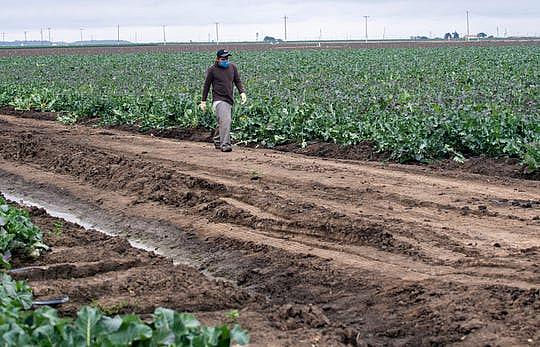Monterey County ag workers comprise nearly a quarter of county COVID-19 diagnoses
This story was produced as a project for the 2020 California Fellowship.
Other stories in this series include:
Ag workers exempted from COVID-19 shelter in place mandate, advocates fear for health
Protected in the fields but not at home: Salinas H-2A farmworkers at risk
‘The perfect storm of vulnerability’: Protection in the fields doesn’t follow farmworkers home
Trump plans to halt immigration, California growers aren't thrilled
Sixth person dies from COVID-19, Alisal and North Salinas hardest-hit in county
Monterey County growers face 'unprecedented losses' amid pandemic
Close quarters: Overcrowding fuels spread of COVID-19 among essential and service workers
Evicted Monterey County renters face greater risk of contracting COVID-19
Do California ag counties hold solutions to Monterey County farmworker housing crisis?
Monterey County advocates, growers urge renewed focus on farmworker housing
Housing bills aim to extend tenant, landlord protections for Californians amid pandemic

Photo: David Rodriguez/ The Salinas Californian
One hundred and eighty three people have now tested positive for COVID-19 in Monterey County, the latest data from the county Public Health Department shows.
Friday, Dr. Ed Moreno, the county Health Officer, confirmed that 41 of those people diagnosed with COVID-19 are agricultural workers: people who work picking, packing, or in other areas. They comprise nearly a quarter of those infected with the disease.
"Ag workers are uniquely vulnerable to this virus because of the close proximity they often work and live," said California Assemblymember Robert Rivas, a Democrat representing the Salinas and Pajaro Valleys in an April interview. "Farmworkers can’t often take the necessary steps to protect themselves."
One hundred and thirteen people diagnosed with COVID-19 live in Salinas. Salinas is the largest city in the county, with more than 150,000 residents within its boundaries, according to American Community Survey data. It has the highest-density population in the county, and also has multiple hospitals running tests for COVID-19.
According to the 2018 Salinas and Pajaro Valley Farmworker Study, more than 90,000 farmworkers live in the region, earning an average of $17,500 a year, according to the U.S. Department of Labor.
Agricultural workers plant, harvest and pack the produce people are buying in record numbers during the pandemic. Now, these workers have been deemed essential by county, state and federal government regulations.
However, they often live in overcrowded or sub-par conditions, fitting multiple families into houses, apartments, or structures not built as full-time dwellings, such as garages.
Health experts say overcrowded conditions such as the ones agricultural workers live in can hasten the spread of COVID-19.
"When someone becomes sick, the question: is can they isolate themselves," said Moreno. "Crowded living arrangements usually result in many people living in a single dwelling and there are often maybe just one bathroom. So if you’ve got a large family living in a house and there’s just one bathroom, they may be able to isolate themselves in a room but they all have to use that bathroom. That….is how crowded living could lend itself to transmission within a home. "
So far, 55 people diagnosed in Monterey County are between the ages of 24 and 34, the highest of any one age group. Ninety six people acquired the virus through person-to-person transmission, Monterey County has determined, followed by 51 cases of community-acquired transmission.
While just over 100 of the people afflicted with COVID-19 have preexisting conditions, such as hypertension (24), diabetes (23) or asthma (6), 78 people diagnosed had no preexisting conditions.
Kate Cimini is a multimedia journalist for The Californian. She reported this story with support from the California Fellowship through the USC Annenberg Center for Health Journalism. Call her at (831) 776-5137 or email kcimini@thecalifornian.com. Subscribeto support local journalism.
[This article was originally published by The Californian.]

